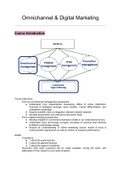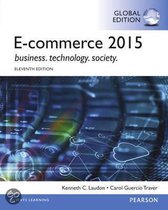Samenvatting
Summary Omnichannel & Digital Marketing ().
- Instelling
- Universiteit Antwerpen (UA)
- Well-structured summary with all necessary information - All unnecessary info has been removed - Clearly indicated what is exam material for the exam and what is not - With this summary, you do not need extra material to study for the exam - Univeristy of Antwerp given by Prof. Dr. Annouk Li...
[Meer zien]





